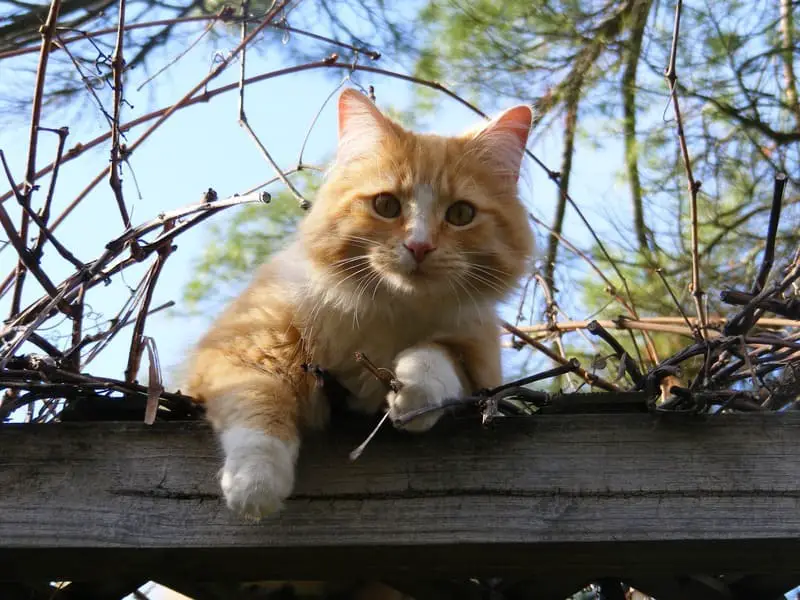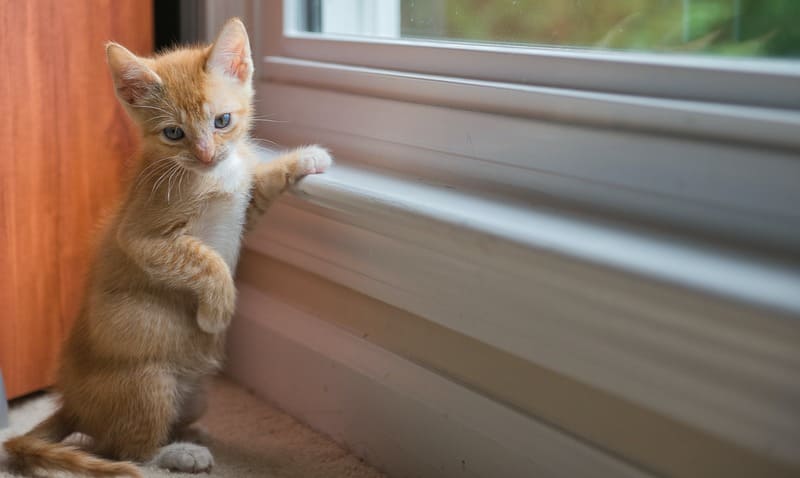If you’re a cat owner, you know how it feels when your feline friend suddenly vanishes without a trace. It’s a heart-pounding, anxiety-inducing experience that can leave you feeling helpless and frantic. But fear not, because in this article, we’re going to lay out a step-by-step guide on what to do when your beloved cat goes MIA. From recognizing the signs to getting your furball back safe and sound, we’ve got you covered. So, let’s jump right into it and make sure you’re prepared for that unexpected cat-astrophe.

Understanding the Signs: Is Your Cat Really Missing?
How to Determine if Your Cat is Missing
It’s a distressing moment when you can’t find your cat, but before you hit the panic button, let’s establish whether your feline friend is genuinely missing or simply hiding. Cats are notorious for their knack of finding the most obscure hiding spots in your home, and they can remain concealed for hours. To determine if your cat is truly missing, here’s what you need to do:
- Check the Usual Spots: Begin your search by peeking into your cat’s favorite hiding spots. Cats often seek refuge in closets, under beds, or behind furniture.
- Shake the Treat Bag: Cats have a keen sense of hearing, especially when it comes to the sound of a treat bag rattling. Give it a shake and see if your cat comes running.
- Call Your Cat’s Name: Walk around your home calling your cat’s name in a soothing tone. If your cat is hiding nearby, they might respond to your voice.
- Search Outside: If you’re certain your cat is not inside, venture outside and check your yard or immediate surroundings. Cats sometimes slip out unnoticed.
- Talk to Family Members: Make sure to ask family members or anyone who might have been around if they’ve seen your cat. Sometimes, kids or other family members might have let them out or spotted them somewhere.
- Inspect Favored Hiding Spots: Cats often have a few go-to hiding spots. If you’ve found your cat there before, check those spots first.
Signs Your Cat Might Be Truly Missing
If you’ve exhausted all these options and there’s still no sign of your cat, it’s time to consider that your cat might be missing. Here are some signs to look out for:
- Longer Absence: If your cat has been gone for an unusually long time, it’s cause for concern. Cats typically don’t stay away for days on end.
- No Response: Even if you’ve tried calling your cat repeatedly and shaking the treat bag with no response, it could indicate a more serious situation.
- Unusual Behavior: If your cat is generally very social and suddenly becomes reclusive or disoriented, it could be a sign that something is amiss.
- Outdoor Cats Don’t Return: If your cat is used to outdoor adventures but doesn’t return, it’s time to worry. Outdoor cats tend to come back home regularly.
Immediate Steps to Take When Your Cat Disappears

Stay Calm and Start Acting
When you’re sure that your cat is missing, it’s crucial to stay calm and take immediate action. Time can be of the essence, and every moment counts in the search for your furry friend. Here’s what you should do:
- Gather a Recent Photo: Find a recent, clear photo of your cat. This will be invaluable for creating lost cat posters and sharing on social media.
- Check the Immediate Area: Conduct a thorough search in and around your home. Cats can sometimes get stuck in tight spaces or wander off just beyond your doorstep.
- Alert Your Neighbors: Let your neighbors know that your cat is missing. They might have spotted your cat or could keep an eye out for them.
- Create a Detailed Description: Note down important details about your cat’s appearance, such as distinctive markings or collar color. This will help in identifying your cat.
- Start Making Posters: Begin creating lost cat posters with your cat’s photo and your contact information. Be sure to use clear and large fonts that are easy to read.
- Notify Local Animal Shelters: Contact nearby animal shelters and provide them with a description of your cat. In some cases, cats are brought to shelters by concerned individuals.
- Social Media and Lost Pet Websites: Share your cat’s photo and details on social media platforms, especially local community groups. There are also dedicated websites for lost pets where you can post information.
- Set Out Food and Litter: Leave a bowl of your cat’s favorite food and water outside your home, along with a small box of used cat litter. The scent can attract them back.
- Stay Vigilant: Continue searching, calling, and being vigilant. Your cat may return on their own, so don’t give up hope.
By taking these immediate steps, you’re increasing the chances of your cat’s safe return. Stay focused, and remember that many lost cats are reunited with their owners through these efforts.
The Importance of a Search Plan and Timeline
When your beloved cat goes missing, having a well-structured search plan and timeline can significantly increase the chances of a successful reunion. Here’s how you can create an effective search plan and timeline:
Establish a Search Team
Gather family members and friends to form a search team. Assign specific tasks and responsibilities to each member. Having a team can make the search process more efficient and reduce stress.
Create a Search Radius
Define the area where you’ll concentrate your search efforts. Start with your home as the center and gradually expand outward. Cats often stay close to home when they’re lost.
Prioritize Search Areas
Determine the most likely places where your cat might be hiding or wandering. Concentrate your initial search on these areas. High-potential places may include nearby parks, gardens, or favorite hiding spots.
Set a Search Schedule
Establish a daily search schedule to ensure consistency. Cats are creatures of habit, and a predictable search routine can help lure them back. Be patient and persistent; it may take time.
Use Search Methods
Implement various search methods, such as calling your cat’s name, shaking the treat bag, and using a flashlight at night. If your cat is hiding nearby, these methods can help draw them out.
Document Your Search
Keep a log of your search activities. Note the date, time, and locations you’ve checked. This documentation can help you track your progress and identify areas that need more attention.
Maintain Communication
Stay in touch with your search team and update them on any developments. Effective communication can help everyone stay informed and motivated throughout the search.
Stay Positive and Hopeful
While it’s natural to feel worried and anxious, maintaining a positive attitude is crucial. Cats can sense your emotions, so projecting confidence and hope can be reassuring to your lost pet.

Utilizing Technology: Tracking and Social Media
In the digital age, technology can be a valuable ally in the search for your missing cat. Here’s how you can use tracking devices and social media to aid in your efforts:
Tracking Devices
GPS Cat Collars
Consider outfitting your cat with a GPS tracking collar. These devices provide real-time location information, allowing you to track your cat’s movements through a smartphone app. However, be aware that not all cats tolerate wearing collars, so ensure it’s comfortable for your feline friend.
Microchips
Ensure your cat has a microchip implanted by a veterinarian. If someone finds your cat and takes them to a shelter or vet, the microchip can be scanned to identify your contact information.
Smartphone Apps
There are smartphone apps designed for lost pets. These apps allow you to create a profile for your cat, share it with the community, and receive alerts if someone in your area spots your pet.
Social Media
Lost and Found Pet Groups
Join local lost and found pet groups on social media platforms like Facebook. Post a clear photo of your cat, along with relevant details, in these groups. Many kind-hearted individuals actively share and look out for lost pets in their neighborhoods.
Share Widely
Use your personal social media accounts to share information about your missing cat. Encourage friends and family to share your posts, increasing the reach of your message.
Online Pet Forums
Participate in online pet forums and communities where members discuss lost and found pets. These platforms can offer valuable advice and support during your search.
Collaborate with Animal Shelters
Contact local animal shelters and provide them with a description of your missing cat. Share the information about your cat’s tracking device or microchip, if applicable, to facilitate a quick reunion.
Leveraging technology and social media can significantly broaden your search efforts. By combining these modern tools with traditional search methods, you enhance the chances of bringing your cat back home safely. Stay dedicated, and don’t underestimate the power of community support in your mission to find your missing feline companion.

Connecting with Local Animal Shelters and Rescues
When your beloved cat goes missing, one of the most vital steps you can take is to connect with local animal shelters and rescues. These organizations play a crucial role in reuniting lost pets with their owners. Here’s how you can effectively collaborate with them:
Start by Making Contact
- Call and Visit Shelters: Begin by calling and physically visiting local animal shelters and rescue organizations. Note down their contact information and addresses for reference.
- Provide a Description: When contacting shelters, provide a detailed description of your missing cat. Mention any distinctive markings, the cat’s temperament, and any identification such as a collar or microchip.
- Share a Recent Photo: Show them a recent, clear photo of your cat. This can help shelter staff identify your pet if they come across it.
Check Regularly
- Frequent Updates: Regularly update the shelters with any new information, sightings, or changes in your cat’s status. Don’t assume they will remember your cat’s details from your initial contact.
- Visit in Person: Pay visits to local shelters and rescues in person. It’s possible that someone has brought in your cat or reported a found pet.
Leave Lost Cat Posters
- Provide Posters: Give shelters and rescues copies of the lost cat posters you’ve created. This way, they can display them or share them with potential adopters.
- Leave Contact Information: Ensure your contact information is prominently displayed on the posters. This makes it easy for anyone with information to reach out to you directly.
Collaborate with Rescue Volunteers
- Connect with Rescue Volunteers: Some animal rescue groups have volunteers who actively search for lost pets. These dedicated individuals may be willing to help in your search.
- Share on Social Media: If the rescue organization has a social media presence, ask them to share information about your missing cat to increase visibility.
Conducting a Thorough Neighborhood Search
While it’s important to utilize technology and connect with local organizations, conducting a thorough neighborhood search remains a fundamental part of finding your missing cat. Here’s how you can go about it:
Search Methodically
- Systematic Approach: Begin by dividing your neighborhood into manageable sections. This approach ensures a thorough search without overlooking any areas.
- Search with a Friend: Enlist the help of a friend or family member to assist in the search. They can cover additional ground and provide emotional support.
Make Use of Flyers
- Distribute Flyers: Create and distribute flyers with your cat’s photo and description in your neighborhood. Post them on community bulletin boards, in local stores, and at busy intersections.
- Talk to Neighbors: Knock on doors and talk to neighbors. Share your cat’s information and ask if they’ve seen anything unusual or if they’ve noticed your cat in the area.
Search at Different Times
- Vary Your Search Times: Cats may be more active during specific times of the day or night. Conduct searches during different times to maximize your chances of spotting your cat.
Lure Your Cat
- Use Familiar Scents: Place items with familiar scents outside, like your cat’s bedding or a piece of your clothing. These scents can help draw your cat back to your location.
Check Hideaway Spots
- Inspect Crawl Spaces: Cats are notorious for finding hiding spots in basements, garages, and crawl spaces. Be sure to check these areas thoroughly.
- Search Trees and Rooftops: Cats are skilled climbers. Look up in trees or on the rooftops of nearby buildings. Your cat might be stuck or taking refuge there.
By connecting with local animal shelters and conducting a methodical neighborhood search, you’re increasing your chances of reuniting with your missing cat. It’s essential to stay persistent and keep the lines of communication open with your community to ensure the safe return of your beloved feline friend.

How to Lure Your Missing Cat Back Home
When your cat goes missing, one of the most effective strategies to bring them back is to use enticing methods to lure them home. Here are steps you can take to tempt your missing cat back:
Familiar Scents and Sounds
- Use Familiar Scents: Place items with your scent, such as a worn piece of clothing or your cat’s bedding, near your home. This can provide comfort and a recognizable scent trail for your cat to follow.
- Play Familiar Sounds: If your cat has a favorite toy that makes noise or if you’ve recorded your voice calling their name, play these sounds outside your home. Cats have acute hearing and may be drawn to these familiar sounds.
Food and Treats
- Open a Can of Tuna: The strong aroma of tuna is a favorite for many cats. Crack open a can of tuna and place it outside your home. The enticing scent can be a powerful lure.
- Use Their Favorite Treats: If your cat has a particular treat they adore, scatter some of these around the perimeter of your home. The promise of a tasty reward might entice them to return.
- Catnip: If your cat is responsive to catnip, consider spreading some catnip near your home. It can be an irresistible attraction for many felines.
Lure at Night
- Search After Dark: Cats are often more active during the night. Head out with a flashlight and search your neighborhood during the evening hours. The reflection of a cat’s eyes in the dark can help you spot them.
- Use a Laser Pointer: Some cats are captivated by laser pointers. Shine a laser beam on the ground near your home, and your cat may be drawn to chase it.
Calm and Patience
- Stay Calm: While searching, remain calm and composed. Cats can sense your emotions, and a calm presence can be reassuring to a lost pet.
- Be Patient: Luring your cat back may not happen immediately. It might take some time, so be patient and persistent in your efforts.
Preventing Future Disappearances: Tips for Cat Owners
Preventing your cat from going missing in the first place is paramount. Here are essential tips for cat owners to keep their feline friends safe and secure:
1. Keep Cats Indoors
- Indoor Cats: Keeping your cat indoors is the safest way to prevent them from getting lost or injured outside. Indoor cats are less likely to encounter dangers like traffic or predators.
2. Outdoor Enclosures
- Catios: Consider creating an outdoor enclosure, commonly known as a “catio,” where your cat can safely experience the outdoors without roaming freely.
3. Secure Doors and Windows
- Screened Windows: If you like to open windows, make sure they are securely screened to prevent your cat from escaping.
- Secure Exits: Ensure doors are securely closed and use caution when entering or exiting your home to prevent your cat from darting outside.
4. Identification
- Collar and ID Tag: If your cat is allowed outside, have them wear a collar with an identification tag that includes your contact information.
- Microchipping: Microchip your cat. This permanent form of identification can help reunite you with your cat if they get lost.
5. Spaying and Neutering
- Spaying/Neutering: Spaying or neutering your cat can reduce their urge to roam, especially during mating seasons.
6. Supervised Outdoor Time
- Supervised Play: If you want to let your cat enjoy outdoor time, do so under your direct supervision and with a secure harness and leash.
7. Monitoring Behavior
- Observe Behavior: Be attentive to any changes in your cat’s behavior or routine, which could signal a desire to explore outdoors.
8. Emergency Plan
- Emergency Kit: Prepare an emergency kit with a recent photo of your cat, their medical records, and contact information for local animal shelters and rescues.
By taking these preventive measures and employing effective lure tactics, you can increase the chances of keeping your cat safe and ensuring they return home if they ever go missing. Remember, a proactive approach is key to the well-being of your feline companion.
Conclusion
In conclusion, remember that the bond between you and your cat is a special one. When your furry friend goes missing, it can be a time of worry and stress, but by taking proactive steps like creating a search plan, using technology, and connecting with local resources, you can increase the chances of a safe reunion.
Additionally, the power of a thorough neighborhood search and the allure of familiar scents and treats should not be underestimated in bringing your cat back home. Lastly, keeping your cat safe in the first place is equally crucial, so follow the preventive tips mentioned here to minimize the chances of future disappearances.
Stay positive, stay vigilant, and remember that many lost cats are found and returned to their loving homes. Your dedication and care can make all the difference in ensuring your beloved feline companion’s well-being.
